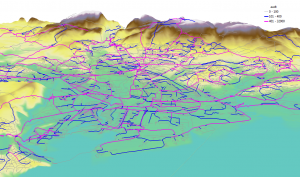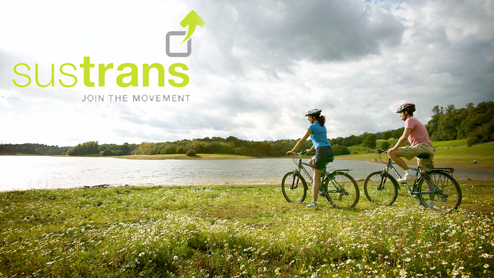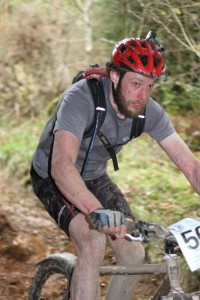Crispin will be presenting sDNA models of pedestrian and cyclist travel at the Association of European Schools of Planning Conference, Prague, 14th July 2015. As ever, get in touch if you would like to meet up.
Author Archives: sdna
3d network models for the prediction of cyclist flows (TPM 2015)
 Crispin & Alain will both be at the Transport Practitioners Meeting in London, 2nd July 2015, talking about 3d network models for the prediction of cyclist flows.
Crispin & Alain will both be at the Transport Practitioners Meeting in London, 2nd July 2015, talking about 3d network models for the prediction of cyclist flows.
Short version: sDNA+ allows the modelling of link level cyclist flow models based on the spatial network alone (ideally calibrated with cycle and motor vehicle count data). First we produce an sDNA model of motor vehicle flow, then feed this into the sDNA+ cycle model which predicts propensity to cycle based on urban density, and cyclist routes based on length, directness, avoidance of slope and avoidance of vehicle traffic.
We also have models of accidents based on this, and tools for assessing the conflict between motorized and cycle traffic on a city wide scale.
New Funding for sDNA Pedestrian and Cycle Model

GISRUK 2015
Crispin will be presenting the latest sDNA developments at GISRUK 2015. His abstract describes (formally for the first time) the reasoning behind our continuous space algorithm. If you would like to catch up, he will be around for all three days of the conference.
Ironing out the kinks in angular network analysis
New research published on theoretical network analysis
Spatially localized closeness and betweenness are the bread and butter of modern spatial network analysis, and in particular, spatially localized angular analysis has become something of a de facto standard. But did you know this standard contains a fundamental contradiction?
Cooper, C. H. V. (2015) Spatial localisation of closeness and betweenness measures: a self-contradictory but useful form of network analysis. International Journal of GIS (accepted, in press).
This paper arose out of an issue we discovered during the design of sDNA. Spatial localization usually implies restricting analysis to a certain (Euclidean) scale, but angular shortest paths are by definition no shorter than Euclidean ones, and are longer at least some of the time. Thus angular shortest paths break the specification of spatial locality.
Does this matter? Usually no, but sometimes yes. In particular, weighted angular analysis can suffer from some serious errors if the wrong algorithm is used to handle the contradiction. sDNA+ allows a choice of algorithms for just this purpose.
Modelling cycle flows, collisions and hotspots for improvement – Sustrans seminar on sDNA (+ slides)
The slides for Crispin Cooper’s Sustrans seminar are available here. Crispin gave a seminar at Sustrans Cardiff on sDNA models of cycle journeys, which can predict both flows of cyclists and risk of conflicts with motor vehicles, as well as map hotspots for infrastructure improvement.
Wed 28th January 2015, 10.30am, Sustrans HQ Cardiff
Sustrans contact Lindsey.Curtis@sustrans.org.uk
sDNA Pedestrian Environment Review System (PERS) study presented at CIHT event
Ringo Chan of ARUP global consulting engineers presented an sDNA pedestrian footfall model for Leadenhall Street, London at yesterday’s Chartered Institution of Highways & Transportation event, “Planning for Pedestrians”.
Ringo’s work makes use of Pedestrian Environment Review System (PERS) data both as a predictor of pedestrian destination attractiveness, and pedestrian route attractiveness. This is a hot area of research – if you are interested in using PERS with sDNA please get in touch with Crispin for more information (cooperch@cardiff.ac.uk).
The event was well attended and the work well received – thank you Ringo.
Excellence in Spatial Planning Research Awards
Chinmoy Sarkar and Chris Webster recently won the Excellence in Spatial Planning Research award (academic category), for their work using sDNA to add urban morphometric data to the UK Biobank medical database.
The Awards were presented by Trudi Elliott, Chief Executive of the RTPI, who said: “I congratulate all the winners on their outstanding achievements and also to the commended researchers. These Awards highlight the contribution of academics, teachers, learners and employers into greater understanding of the creation of high quality places.”
The UK Biobank Urban Morphometric Platform is a high resolution database of more than 750 spatial urban morphological metrics for the 500,000 Britons in the Biobank Prospective cohort. The platform is being developed as a nationwide resource for evidence-based healthy city planning and other public health interventions.
The judges felt that this was an important study because it provides a robust evidence base for future initiatives that try to support built environment interventions that could have positive public health outcomes. This is a key ambition of planning, yet the basis for decision making is often weak. This study makes a major contribution to the field.
UK Biobank Built Environment Morphometrics for Wales: https://biobank.ctsu.ox.ac.uk/crystal/docs/ard-1195_UKBBuiltEnvWales.pdf
UK Biobank Built Environment Morphometrics for UK: http://biobank.ctsu.ox.ac.uk/crystal/label.cgi?id=100115
sDNA discussed in Urban Planning Forum (Chinese)
Our first publication in Chinese is here - a comparison between space syntax, space logic and sDNA referring back to Euler.
Xiao, Y., Chiaradia, A.J.F., Song, X., 2014, Limitations of space syntax applications in urban planning and ways to improve and extend, Urban Planning Forum, 5(8)
Download here.
sDNA for Active Travel modelling

sDNA’s chief developer demonstrating his commitment to active travel (at a mountain bike endurance event!)
Updated May 2016: sorry this post is hopelessly out of date! I have inserted a few extra items into the list below, but for more details on active travel models in sDNA see recent blog posts.
For examples of cycling models see the slides I presented to the Welsh Assembly.
If you’d like somebody else to run models for you please contact one of our partners.
The sDNA team worked hard to enhance our capabilities for active travel modelling. We are working on numerous real-world projects to stay in touch with the needs of practitioners, as well as completing work on health, recreation and community cohesion.
I thought we’d better get all of our information relevant to active transport in one place, so here goes. I’m sorry if this sounds like a sales pitch – but that’s what it is (selling doesn’t come naturally to academics)!
Here is what we offer already:
- The closeness measures in standard sDNA provide information on both the quantity and efficiency of access to facilities, as well as severance and network gravity.
- The betweenness measures in standard sDNA show where flows of pedestrians, cyclists and cars are likely to build.
- The hybrid metric system in sDNA+ allows for modelling routes that trade off multiple characteristics. For example, you can analyze cycling routes that strike a balance between speed, simplicity, hill avoidance and traffic avoidance. The traffic data itself can be generated by a standard sDNA model.
- The hybrid radius and banded radius system allows for more accurate cyclist/pedestrian models simulating the decision to walk/cycle based on accessibility.
- Preset metrics allow quick selection of rules for simulating cyclists, pedestrians, motor vehicles and public transport
- The new statistics tools allow easy and accurate calibration of sDNA models to real data, especially when combined with banded radius from sDNA+.
- The origin and destination weighting system in sDNA+ allows users to incorporate data they already have on homes, jobs and facilities. Alternatively if no such data is available, link weighting can be used as a proxy missing data.
- sDNA+ can output geodesics to assist in evaluation of likely routes by any means the user wishes. For example, all individual simulated pedestrian routes can be examined for exposure to traffic.
- sDNA+ can output predicted users of any given link in the network - especially useful for visualising the effect of new infrastructure.
- sDNA+ can output network buffers even for large scale, country-wide networks.
- sDNA+ operates in full 3d, allowing for the inclusion of terrain contours and multilevel spaces inside buildings such as stations and shopping malls.
- All of the above can be compared before and after a simulated intervention.
sDNA+ is now available to the public as well as our research collaborators. If you are interested please get in touch.
